
Review on Arducam Mini Module Camera Shield 5MP Plus OV5642 Camera Module: Arduino UNO Mega2560 Compatible by Timothy Barnes

ArduCAM Mini_5MP_Plus
Update January 21, 2019 CPU intensive camera meets Arduino… mediocre results. After a few more weeks of testing, I have to give up my enthusiasm for the ArduCAM 5MP Plus camera module. While ArduCAM customer service gets an A for their efforts, they are primarily limited to getting the camera working with their host application and then have many excuses and few answers. Regarding the hardware, please understand that image processing requires a lot of processing power, and although ArduCAM includes an 8MB fifo buffer, which is not enough to do everything at high speed, now comes the reality. In your host application, a "single" 320x240 image renders fairly quickly, but this is too small to be very useful. The 2592 x 1944 image has a lot of detail but takes about 15 seconds to process. For the rest of my review, I've settled on 640 x 480. Now I understand that the camera is constantly producing a video output stream. In the US, that would be 29.97 fps, or a "shutter speed" of 1/30 second per frame. So when you take a picture, it's actually a video picture. Any movement in the frame will be blurred. I found that in "continuous" mode and medium resolution, when panning the camera, the images were blurry and unusable. I then used their "Capture2SD" sketch to write images to the SD card and modified the sketch to have a PIR sensor to trigger a three-frame capture sequence. While it worked sort of 'as advertised', the images were awful...the motion of everything in the frame was blurry. Of course, without RTC, there is no reference to when the images were captured and written to SD. The file size of a 640x480 image is about 40KB... that's a lot of compression. If you're looking for a camera with an IR sensor that records to an SD card, buy the TrailCam... You can find it on Amazon with an 8-megapixel camera for stills or video, weatherproof housing, time stamping, and IR low- Light function. Connect your camera to ESP8266 ESP-07 and view images online. Based on the image results I've received so far, I'm just not going to waste my time. You want to see your pictures online, buy a webcam and use the power of your computer, or choose from any number of companies that offer surveillance equipment; RING for example. Given the amount of processing required for images, I think this camera needs to be modified to at least quadruple the processing power, and yet the coupling to the Arduino platform limits its usefulness. Update 01/13/2019 Now I got the camera working and I need to give ArduCAM an A in Technology for developing an advanced camera product and applications for Arduino microprocessors. As for documentation, however, I give them a "C” because for something as complex as a camera, documentation needs to be accurate to avoid many hours of frustration. Regarding customer support, I also give them an A as they are very responsive and have also confirmed that they will update their user documentation based on my detailed input of issues. The camera is really almost ready to use BUT you need to be alert and have some IDE programming experience. Beginners can go in circles with small conflicts/inconsistencies in the documentation. Here is a list of what I found in their minis camera online manual: 1. Although the recommended ArduCAM_Mini_Video_Streaming sketch tutorial says it is specifically for 5MP_PLUS, if you include 5MP_PLUS in the file you will get a compilation error Comment out memorysaver.h. You need to comment out the 5MP line. Then for some reason I got a compilation error for the #if loop in the second section of (Shield)memorysaver.h so I commented out that whole section. The PDF application notes and online manual should emphasize that the host application is bundled with the arduino-master.zip file. The application notes point to github, but it's not possible to fully download a working copy this way.3. There is no manual specifically for mini_5MP in the host app. I finally found a tutorial for the Shield version that was somewhat helpful. The main problem is that it mentions the COM port setting AND the baud rate. Well, Video_Streaming thumbnail bitrate is 115200, but ONLY 921600 works for application host. For Mini_5MP_PLUS the correct sketch which should have been suggested in the online manual is ArduCAM_Mini_5P_PLUS_Video_Streaming and comment out the 5MP_PLUS line in memorysaver.h. According to ArduCAM support, this guide was originally written for the Mini_2P and has never been updated.5. ArduCAM schematic is ok. Next I will examine some other example sketches and move on to the ESP8266 platform with my 5P_PLUS. Hope this helps someone. End of update 1/10/2019 So I'm writing this after my first attempt to get it working. updates later. Mfr states that it is almost plug and play without writing any code. According to the detailed online manual, it will NOT compile. I wrote to support@arducam.com for help. Let's see when I get an answer.
- Dope 🔥
- Useless Features
New products
Comments (0)
Top products in 🖥️. Single Board Computers
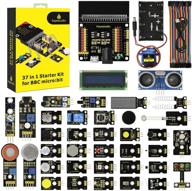
🎁 Великолепный набор датчиков Keyestudio 37-в-1 для BBC Micro bit: коробка со справочником, совместимый с версиями V1.5 и V2, подарок для детей и взрослых (Плата Microbit не входит в комплект)

11 Review
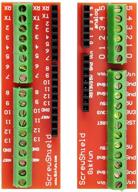
Gikfun Screw Shield Expansion Board: Дополнение Arduino UNO R3 с помощью EK7007 Add-On

11 Review
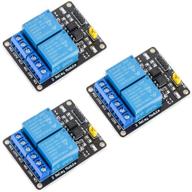
🌐 MCIGICM 2-х канальный модуль реле DC 5V: оптоизолированный модуль с низким уровнем срабатывания для Arduino UNO R3, DSP, ARM, PIC, AVR, STM32, Raspberry Pi

11 Review

55" TV LG OLED55C2RLA 2022 HDR, OLED, dark titanium

38 Review
Another interesting products
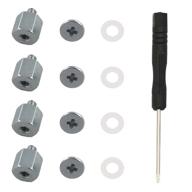
M.2 Screw Kit: Easy Mounting for NVMe SSDs on ASUS Motherboards

19 Review
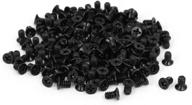
uxcell 3.5" HDD Screw Black 200pcs for Computer PC Case - Flat Phillips Head - 6#-32 - Hard Drive Fasteners

10 Review
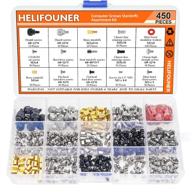
🖥️ Helifouner 450-Piece Computer Standoffs Spacer Screws Kit: Ideal for Hard Drive, Motherboard, Fan, Power Graphics & Computer Cases

10 Review
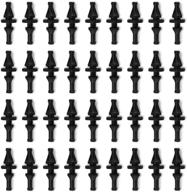
36-Pack Black Rubber PC CPU/Case Fan Screws/Rivets Set for Computer

11 Review

